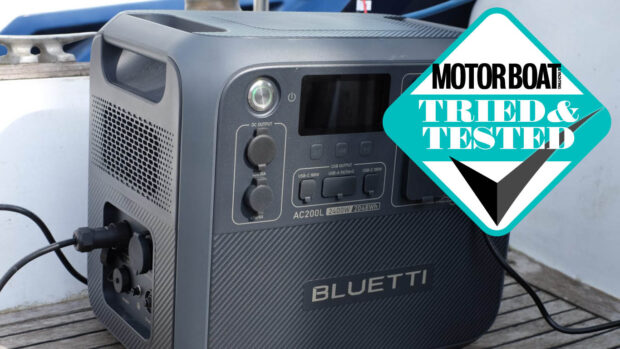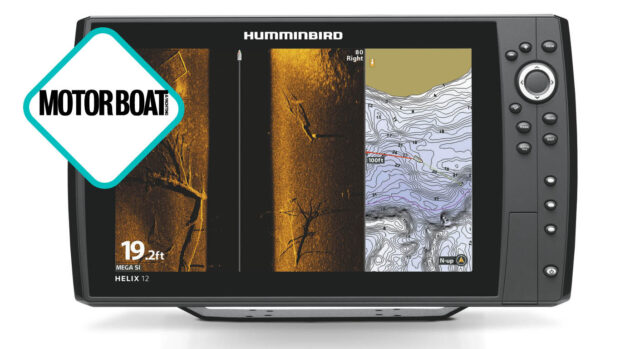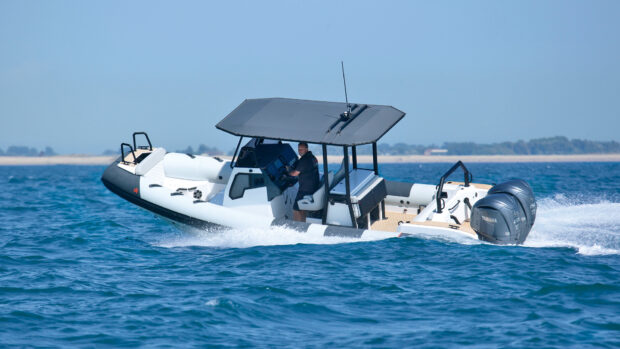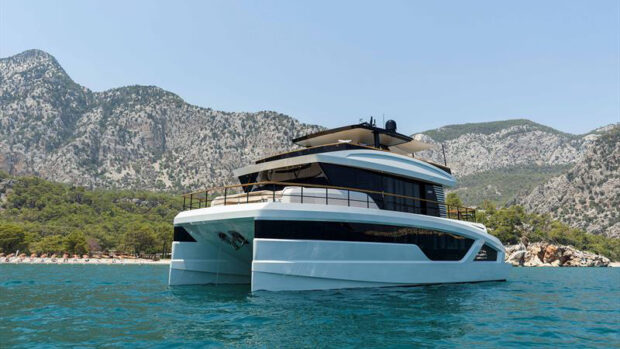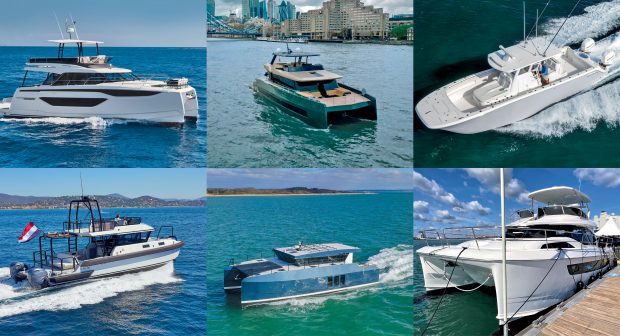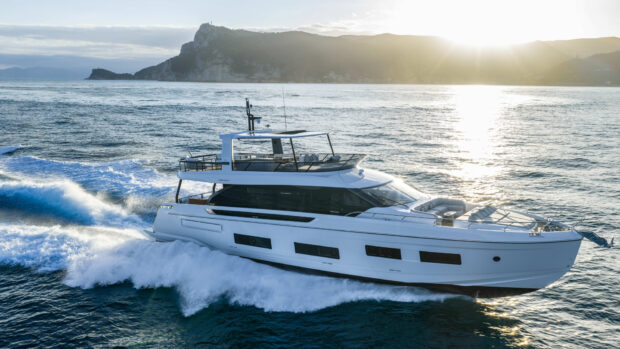The best portable power stations help to keep us powered up no matter where our adventures take us. Even if it is just down the garden, glamping. For boaters they're the best thing since sliced bread.
In today’s connected world, reliable power is non-negotiable, whether you’re tackling an off-grid expedition, embracing the van life movement, seeking home backup for emergencies, or simply trying to keep the peace with a group of hungry devices.
The ubiquitous question, whether you’re atop a mountain, deep in a forest, or crossing an ocean, is always the same: “Can I plug my phone in?”—often immediately followed by, “What’s the Wi-Fi code?”
The solution for instant, quiet, and robust energy lies in the modern portable power station (PPS). These devices are the ultimate answer to power freedom, freeing you from noisy generators and messy cable runs.
While keeping guests and family happy with fully charged smartphones is a common use, a reliable power supply is crucial for much more serious scenarios. Recently, while skippering a customer’s sailing yacht, a guest needed to plug in their vital sleep apnea breathing apparatus overnight while we were anchored.
The boat had a superb built-in generator, but running it meant a constant, intrusive humming noise. The solution? A truly silent, simple power pack from Jackery, wrestled from the storage cupboard. It powered the device all night, ensuring the guest slept safely and everyone else slept soundly, without the generator’s hum.
From personal experience on my own projects, I use a small EcoFlow River Pro for light tools and a larger Bluetti unit for demanding corded power tools, so I can attest that these units are indispensable.
The power and features of these portable power stations vary widely. As a simple guide, the more you pay, the greater the capacity (Wh) and output (W) you get. In this guide, I’ll break down the best power stations on the market, comparing everything from their battery chemistry (LiFePO4 vs. Li-ion) and charge speed to their capacity and portability. Find the perfect unit to power your next adventure, job site, or home emergency.
Editors Top choices at a glance:
Best for light weight portable power –
Best for heavy duty power use –
Best portable power stations tested and reviewed
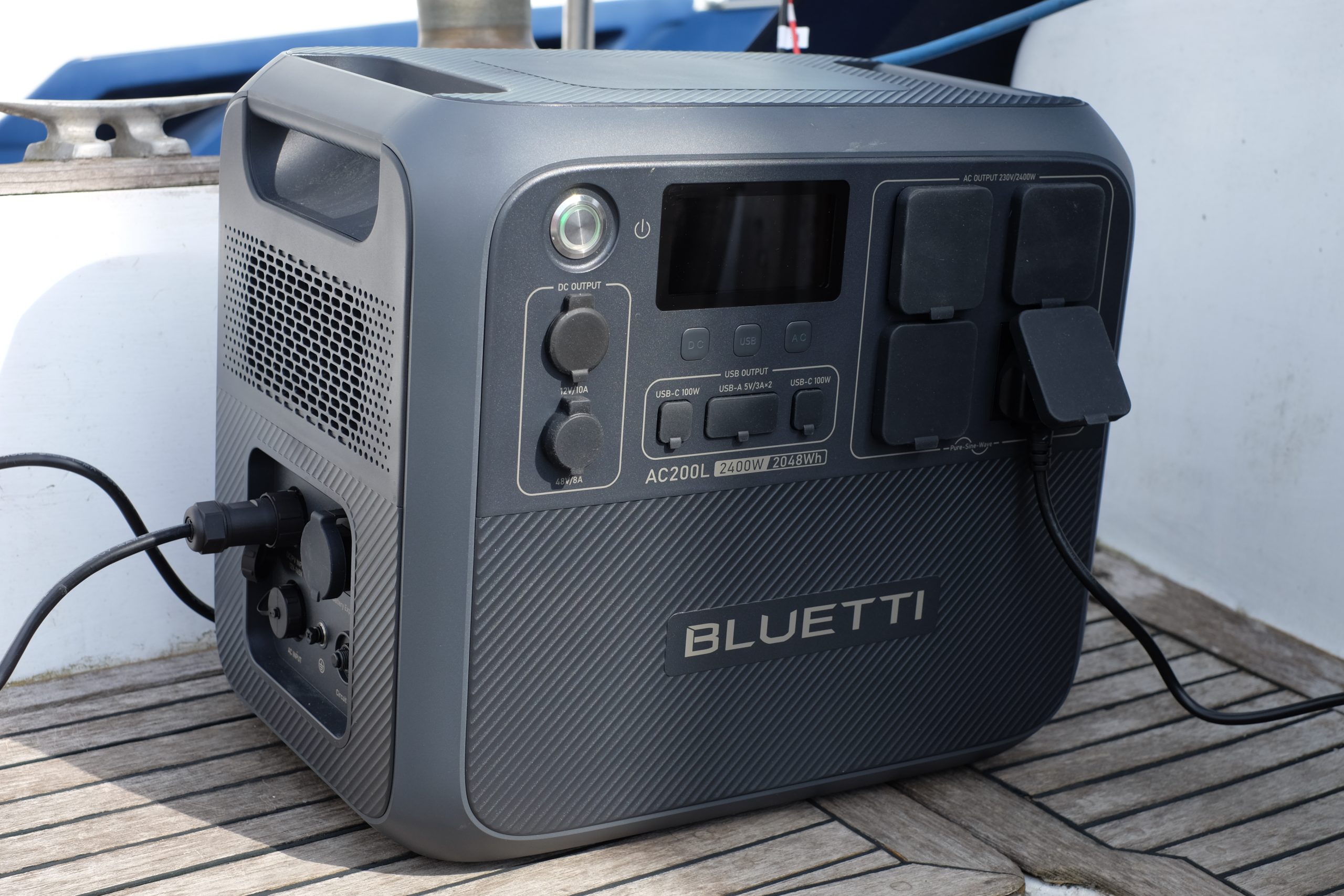
Bluetti AC200L Portable Power Station
Specifications: Capacity: 2,048 Wh | AC Continuous Output: 2,400 W | AC Surge Output: N/A | Battery Type: LiFePO4 (Lithium Iron Phosphate) | Life Cycles (to 80%+): 3,000+ | Weight (kg): 28.3 kg (62.4 lbs) | Dimensions (L x W x H): 42 x 28 x 36.65 cm | Max AC Input (Recharge): 2,400 W | Max Solar Input: 1,200 W | Expandable: Yes (w/ B210, B230, B300)
Reasons to Buy: Powerful enough for most power tools and appliances, large capacity, sturdy built in handles
Reasons to Avoid: Seriously weighty and less easy to move around by hand, may be a bit overkill if all you want to charge is a few mobile devices
The Bluetti AC200L has two sturdy handles and for a very good reason. This thing is a beast!
As soon as I’d got it tip top charged I plugged in every electrical device I own. One by one of course and had a look at how it faired.
Well, there was not a single appliance this absolute powerhouse couldn’t fire up and run.
Hairdryer on full power? Yes no problem. Normal domestic kettle? Yes no problem. Microwave, again no problem.
The hair dryer on full power used about 1% of the power reserve per minute of it being on.
it has connectivity in bucket loads, and if you find one of these isn’t enough to power you through your day, then you can double up with another power pack. though frankly I have no idea what sort of things you’d be running to need that, but the capability is there.
This is the most powerful portable station I have tested so far.
I had a compatible solar panel in my cupboard and when plugged in I had a useful read out of the power going back in to the battery via the front display screen.
The only downside to all of this power is that it does weigh a fair bit. To get it to and from your boat or RV, then you’ll want to use a small trolley or luggage cart.
Also when trying to see which power outlet is active in bright sunshine, it can be hard to see which button is lit.
Otherwise, top marks to Bluetti for making such a versatile and powerful piece of kit.

Optional solar panels take up a fair bit of space on board
Ecoflow Delta Max
Specifications: Capacity: 2,016 Wh | AC Continuous Output: 2,400 W | AC Surge Output: 4,600 W | Battery Type: NCM (Lithium-ion) | Life Cycles (to 80%+): 800 | Weight (kg): 22 kg (48 lbs) | Dimensions (L x W x H): 49.7 x 24.2 x 30.5 cm | Max AC Input (Recharge): 2,000 W | Max Solar Input: 800 W | Expandable: Yes (up to 6,048 Wh)
Reasons to Buy: Powerful enough for most power tools and appliances, large capacity, sturdy built in handles
Reasons to Avoid: Seriously weighty and less easy to move around by hand, may be a bit overkill if all you want to charge is a few mobile devices
The trend for portable power stations replacing petrol powered generators on small to medium-sized boats is gathering pace.
Ecoflow is one of the better-established brands with a proper UK distributor to provide back-up in the event of any issue.
Given that this top-of-the-range Ecoflow Delta Max model costs from £1,999 for the battery pack alone and another £549 for the optional 220W solar panels, that’s a fairly chunky investment.
But what that buys is one of the most powerful portable power packs around, boasting a 2kWh capacity and peak power of up to 3kW. That’s enough to run most household devices.
It has multiple 240V three-pin sockets as well as four USB plugs. The only downside is that it’s a very substantial piece of kit.
Weighing almost 22kg, the Ecoflow Delta Max takes a fair bit of lifting on your own. It also feels rather vulnerable to splashes, knocks and scrapes so the optional protective bag might be sensible.
The solar panels are a nice addition (given the price of mains electricity) but on a boat they gobble up a lot of space and they take a long time to deliver a full charge so I’d be inclined to leave them at home.
In fact, given the risk of power outages this winter, I’d take the whole thing home and keep it on standby just in case.

EcoFlow RIVER 2 Max Portable Power Station 512Wh
Specifications: Capacity: 512 Wh | AC Continuous Output: 500 W | AC Surge Output: 1,000 W | Battery Type: LiFePO4 (LFP) | Life Cycles (to 80%+): 3,000+ | Weight (kg): 6.1 kg | Dimensions (L x W x H): 27 x 26 x 19.6 cm | Max AC Input (Recharge): 660 W | Max Solar Input: 220 W | Expandable: No
Reasons to Buy: Really sturdy low profile built in handle, solar charge is available, chain multiple units together for increased power capacity
Reasons to Avoid: It may not be powerful enough if you want to power multiple high drain devices
If you’re in search of a portable power station to keep your devices charged and essentials running during outdoor adventures or emergency situations, the EcoFlow River 2 Max Portable Power station might be the answer.
Since the Ecoflow River Max 2 portable power station arrived, barely a day has gone by that it isn’t in use.
You see I live mostly off grid, powered up with a solar panel on my camper van and with both wind and solar on my 1989 boat. I’m quite familiar with working with portable power packs for phones and charging my laptop at any given opportunity. I’m currently working on a 1971 project boat which has pretty much zero electrics onboard (yet), save for the engine starter battery.
Yet I still need to charge my cordless power tools and I still want some lighting, so I have to charge my headtorch and inspection lamp as well as the biolight hanging from a hand rail. I bought a 12v charger for my work laptop (an Apple Air) and frankly, with this little power pack, we are good to go.
The plug in solar panel is a real advantage too, but I’ll get to that in a moment. First the functions of the power pack. It has usb sockets that are always on if the unit is on. So plug in a phone or a usb charger cable and it’ll just crack on with transferring some juice to whatever it is you’ve plugged in.
The DC charger section and the AC charger sections need to be individually switched on when you want to use them and switched off again to save on power drain.
So there’s a standard socket for 12v DV charging that my laptop can go into and then there’s the two AC sockets which when switched on give a familiar cooling fan noise as this activates an inbuilt inverter, from which you can eek 500w of power. This will easily power a hand blender or charge any power tool battery. If you want to boil a kettle though or run a hair dryer, it’s not really designed for that, despite it having a boost option to short term give you up to 1000w. You’ll drain the power pack in minutes if you try that. So pay attention to the power requirements of your appliances.

Bluetti EB70 portable power station
Specifications: Capacity: 716 Wh | AC Continuous Output: 700 W | AC Surge Output: 1,400 W | Battery Type: LiFePO4 (LFP) | Life Cycles (to 80%+): 2,500+ | Weight (kg): 9.7 kg | Dimensions (L x W x H): 32 x 21.6 x 22.1 cm | Max AC Input (Recharge): 200 W | Max Solar Input: 200 W | Expandable: No
Reasons to Buy: Lightweight, portable, folding lay flat handle, good number of power outlets
Reasons to Avoid: Not powerful enough for large powertools or appliances
The heart of the Bluetti EB70 is a 716Wh LiFePO4 battery with a 240V AC output of up to 1000W.
The pack weighs 9.7kg but it’s impressively compact and comes with a comfortable folding carry handle and rubberised feet so it won’t slip on a hard surface.
It’s also very well equipped to power and/or recharge almost all portable devices thanks to a pair of three-pin AC sockets, two USB-C ports, two USB-A ports, a 12V cigarette lighter socket and a wireless phone-charging pad.
An illuminated LCD screen shows the current state of charge to the nearest 20% as well as input and output flows in watts. There’s also a built-in light for use at night.
For smaller items such as charging phones, handheld VHFs or laptops, the EB70 works a treat with sufficient power and sockets to charge multiple items at a time for dozens of cycles.
Televisions, power tools and slow cookers should also be fine. It’s only when you get to more power-hungry items that the Bluetti EB70 starts to struggle.
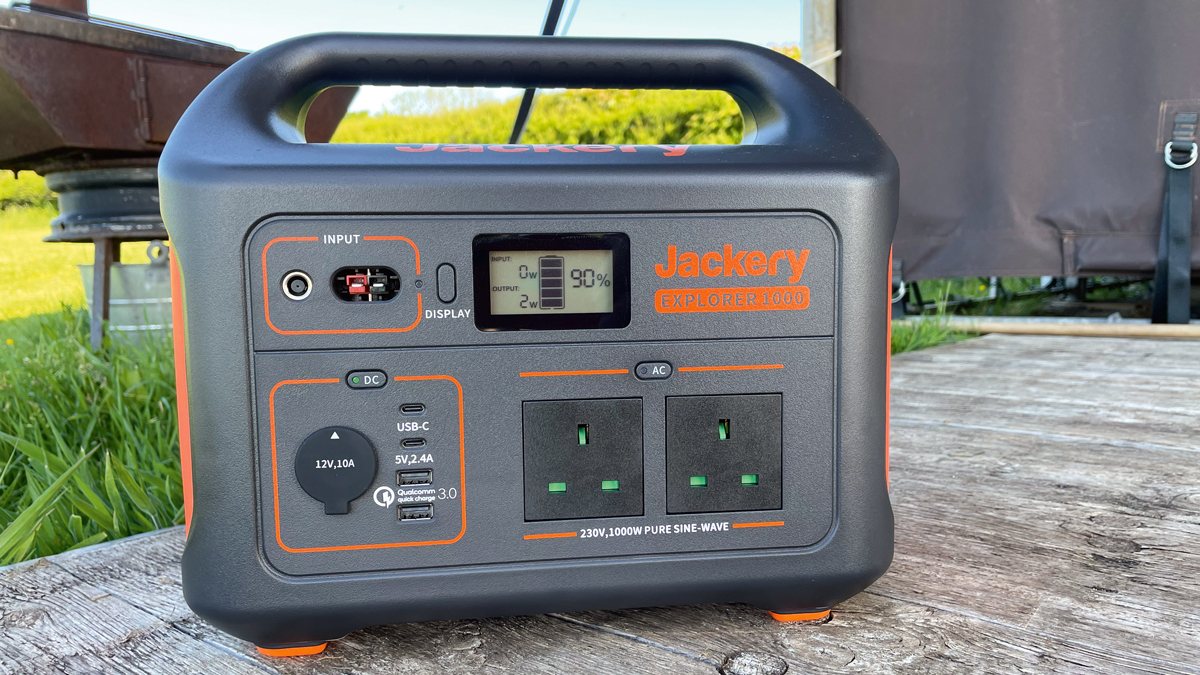
Jackery Explorer 1000 Power Station
Specifications: Capacity: 1,002 Wh | AC Continuous Output: 1,000 W | AC Surge Output: 2,000 W | Battery Type: Li-ion NMC | Life Cycles (to 80%+): 500+ | Weight (kg): 10 kg (22.04 lbs) | Dimensions (L x W x H): 33.3 x 23.3 x 28.3 cm | Max AC Input (Recharge): N/A (Max DC Input 163 W) | Max Solar Input: 163 W | Expandable: No
Reasons to Buy: Good number of power outlet options, easy to move around
Reasons to Avoid: Not powerful enough for large electrical appliances, large top handle takes up stowage space
One of the joys of having a portable device is that it’s not just limited to boat use, you suddenly start finding lots of other situations that are made immeasurably easier with access to AC power.
With a maximum AC output of 1000W (2000W surge), it’s not punchy enough to power electrical goods with a heavy load demand such as a rapid boil kettle or domestic toaster, but it makes light work of cool boxes, televisions, lights, computers and phones.
If you are desperate for a cup of tea in the morning you can always buy a low-wattage camping kettle for £20 that takes a bit longer to boil.
How long it lasts will depend on usage but it kept a 50ft string of outdoor LED lights illuminated all night and multiple phones and tablets charged for three days at Glastonbury, with more than 50% power remaining.
The nice thing about the Jackery Explorer 1000 is that while it’s not quite as powerful as some of the portable power stations like of Festool and Eco Flow, it is small and light enough to carry on and off a boat.
Weighing a moderate 10kg and housed in a robust plastic casing with a built-in carry handle, it will fit into most deck lockers or tuck away in the corner of a cabin without getting in the way.
I’d also recommend paying a bit extra for the optional carry case to give it a bit more protection (it’s not waterproof so it helps guards against rain and spray) and to keep all the charging leads together.
The solar panels are a more questionable investment for boat users as although they fold away to a sensible size, they take up a lot of deck space once set up and you need to keep rearranging them to face the sun.
On a hot June day in my back garden, it took around eight hours for them to boost the Explorer from 50% to 100% – fine for camping or recharging for free at home but a bit of a hassle on a boat with limited space.
Personally, I’d save yourself the extra £483 and settle for recharging the Jackery Explorer 1000 at home. The generator itself is a no-brainer though. As a cleaner, quieter, safer alternative to a portable petrol generator it makes perfect sense.

Festool SYS-PST 1500
Specifications: Capacity: 1,555 Wh | AC Continuous Output: 2,990 W | AC Surge Output: 11,000 W (Short-term) | Battery Type: Lithium-ion | Life Cycles (to 80%+): N/A | Weight (kg): 16.5 kg | Dimensions (L x W x H): 39.6 x 29.6 x 18.7 cm | Max AC Input (Recharge): N/A (3.0 h full charge time) | Max Solar Input: No Solar | Expandable: No
Reasons to Buy: Rugged design, powerful
Reasons to Avoid: Very few power outlets, just one mains AC and one USB C
The big daddy of our pick of the best portable power stations, the Festool SYS-PST 1500 delivers a mighty 2,990W of permanent power and up to 11,000W in a short-term burst.
Despite this formidable performance the unit is not overly heavy or large; it weighs in at 16.5 kg and measures 396 x 296 x 187 mm. A full recharge takes 3 hours, with a built-in smart charging system protecting the battery cells while charging is underway.
In addition to a single 240V UK 3-pin outlet, the unit also provides 5-20V via a USB-C connection. Designed primarily for use in the construction industry, but well suited to many other applications including marine, the SYS-PST 1500’s lithium-ion battery stores 1,500Wh of energy.
This, Festool claims, is sufficient to run all the tools a builder typically uses for an entire working day – and as the average skipper is likely to demand much less power than a tradesman, the system should run for considerably longer on board a boat.

PowerOak Portable Power station 1500Wh
Specifications: Capacity: 1,500 Wh | AC Continuous Output: 1,000 W | AC Surge Output: 1,200 W | Battery Type: Lithium-Ion | Life Cycles (to 80%+): 2,500+ | Weight (kg): 17.2 kg | Dimensions (L x W x H): 37.15 x 16.54 x 36.47 cm | Max AC Input (Recharge): 200 W | Max Solar Input: 500 W | Expandable: No
Reasons to Buy: Slim vertical unit fits easily into smaller nooks
Reasons to Avoid: Quite heavy, power outlets on two faces makes keeping cables tidy more tricky
The 1,500Wh of power stored by the PowerOak means it is capable of running a 1kW travel kettle (or any other 1kW appliance) for 90 minutes non-stop – which of course nobody does.
Estimating the time taken to boil a typical 2 cup travel kettle as 2 minutes suggests this stylish portable power station would serve up to 90 cuppas on a single charge.
The unit (also sold as the Bluetti EB150) delivers its power via one of the two UK 3-pin 240V AC sockets on the back of the box which, incidentally, is available in either blue or black.
In addition, the unit has five USB ports, including one USB-C outlet. Incorporated into the design is an Liquid Crystal Display which shows charging power, AC and DC output power, AC and DC on/off status, and a battery status indicator.

EcoFlow River PRO
Specifications: Capacity: 720 Wh | AC Continuous Output: 600 W | AC Surge Output: 1,200 W | Battery Type: Lithium-ion | Life Cycles (to 80%+): 500+ | Weight (kg): 7.6 kg | Dimensions (L x W x H): 28.9 x 23.5 x 18.0 cm | Max AC Input (Recharge): 660 W | Max Solar Input: 200 W | Expandable: Yes (up to 1,440 Wh)
Reasons to Buy: Useful number of power outlets, easy to carry
Reasons to Avoid: The outlets are on two different sides of the unit making it less easy to keep cables tidy, the large handle looks nice but is quite space consuming
While the EcoFlow River PRO is supplied as a 720Wh unit with a 600W output capability, it has a neat trick up its sleeve – a second battery can be added to double the energy storage capacity to 1,440Wh.
And if you need more output power, that’s not a problem either as the unit features what EcoFlow calls its X-boost mode. This allows the River PRO to power devices up to 1,800W, which covers around 80 percent of kitchen appliances and DIY tools.
Solar panel recharging times of as little as 4 hours are possible by using two EF 11W solar panels (sold separately), while the unit can be recharged from the mains from zero to 80 percent in just one hour, with a full charge achieved in 1.6 hours.

Jackery Portable Power Station Explorer 500
Specifications: Capacity: 518 Wh | AC Continuous Output: 500 W | AC Surge Output: 1,000 W | Battery Type: Li-ion NMC | Life Cycles (to 80%+): 500+ | Weight (kg): 6.04 kg | Dimensions (L x W x H): 30.1 x 19.3 x 24.2 cm | Max AC Input (Recharge): N/A (Max DC Input 65 W) | Max Solar Input: 100 W | Expandable: No
Reasons to Buy: Light weight, portable
Reasons to Avoid: The large handle makes it less easy to stow, only one AC outlet, may not be powerful enough for large electrical devices.
Jackery is a specialist power solutions provider which has been delivering its eye-catching orange and black products since 2012.
The company’s Explorer 500 portable power station is a 518Wh unit with three 12V DC outputs, three USB sockets and a UK 3-pin 240V plug socket.
The AC power output is 500W continuous and 1,000W peak. Keen to present its green credentials, Jackery describes its Explorer 500 as a versatile green solar generator.
That’s because when used in conjunction with the firm’s SolarSaga 100W solar panel, the unit’s lithium-ion battery pack can be fully recharged in around 9.5 hours.
Back in 2016 Jackery won a prestigious Red Dot award for the design of its products, one notable feature of which on the Explorer 500 is the large and clear LCD display showing the input/output power at any given time together with the battery charge status.

Poweroak Portable Power Station 500Wh
Specifications: Capacity: 500 Wh | AC Continuous Output: 300 W | AC Surge Output: 450 W | Battery Type: N/A | Life Cycles (to 80%+): N/A | Weight (kg): 6.21 kg | Dimensions (L x W x H): 29.5 x 19.1 x 19.6 cm | Max AC Input (Recharge): N/A | Max Solar Input: 120 W | Expandable: No
Reasons to Buy: Light and portable, good selection of power outlets, compact format
Reasons to Avoid: Might not be powerful enough for some electrical devices such as larger power tools
Our second choice at the lower end of the power output spectrum is the Poweroak AC50S. This compact 500Wh portable power station features two 240V outlets providing up to 300W of AC power, which makes it capable of running products such as a mini-fridge.
In addition, there are five USB points, including a USB-C socket, two 12V 3A sockets and a 12V 9A cigarette lighter outlet.
With an emphasis on quality, Poweroak says the unit’s onboard lithium-ion battery cell is good for more than 1,000 cycles, and an in-built multi-protection system guards against over-voltage, over-current, over-temperature and short circuit.
Recharging takes 6-6.5 hours using the included AC adaptor/generator, or 6-7 hours using Poweroak’s SP120 120W solar panel (sold separately). Rounding off the Poweroak AC50S package is an included 24-month warranty.
Frequently asked questions:
How long does it last between charges?
I don’t have many appliances at all, so I’ve dug around and asked what other people use their powerpack to powerup. Here’s a quick guide to what you can run on this power pack:
- Cordless powertool battery chargers (typically 5w-20w) You can charge multiple times before any noticeable power drain
- Small hand blender (typically 150w) normally used in short bursts of 2 to 5 minutes so negligible power consumption.
- Nintendo Switch (18w max) charge this as much as you like, you’ll get 2 days of solid charging
- Dometic Tropicool box (typically 46w on 12v) if your cool box uses 46w, and it’s constantly running on a hot day, you’ll drain the power pack in about 8 hours. If it’s cold weather and the cooler only needs to top up the coolness then you’ll get much longer.
- Small portable television (typically 100w) A television is a real power sucker, so if you want to watch a film you’ll have about 4 hours before your power pack needs a recharge.
- Laptop Apple Air (typically 30w)
- Laptop Surface pro 7 (typically 65w) It takes typically an hour to charge up a laptop so you’ll get about 7 full charges out of it assuming nothing else is plugged in.
- Ipad (typically 20w) You charge an ipad over 20 times before you’ve fully drained the power bank.




